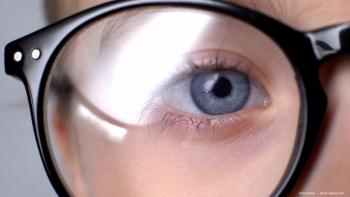
How physicians serve as investigators in ocular allergy cases
Diagnosis of allergic conjunctivitis, which can have a significant quality-of-life burden, may be overlooked or missed without a proper evaluation.
Take-Home Message
Diagnosis of allergic conjunctivitis, which can have a significant quality-of-life burden, may be overlooked or missed without a proper evaluation.
Dr. Luchs
By Cheryl Guttman Krader; Reviewed by Jodi Luchs, MD
Long Island, NY-While it is one of the most common conditions seen in daily practice, allergic conjunctivitis does not receive the attention it deserves in terms of its diagnosis and treatment, said Jodi Luchs, MD.
“Ocular allergy is not just a minor nuisance, and so it is important to key in on this condition,” said Dr. Luchs, assistant clinical professor of ophthalmology, Hofstra University School of Medicine, Long Island, NY.
“Individuals affected by ocular allergies can experience significant discomfort with their symptoms, problems with contact lens wear, difficulties with visual functioning affecting their work and leisure activities, and cosmetic issues that have psychosocial sequelae,” he said.
Uncovering allergic conjunctivitis
Diagnosis of allergic conjunctivitis may be challenging at times as it can co-exist with other ocular surface conditions that have overlapping signs and symptoms.
While it is generally true that itching is a hallmark sign of ocular allergy, patients affected may complain more about other manifestations, including grittiness, foreign body sensation, tearing, burning, and redness.
The usual signs of allergic conjunctivitis may be absent if the patient is self-medicating with over-the-counter products that make their eyes appear asymptomatic.
“Considering this information underscores the importance of taking the time for a careful history to diagnosis allergic conjunctivitis, technicians can be helpful in obtaining the information prior to the examination,” Dr. Luchs said.
The ocular examination should focus on identifying the classic signs of allergic conjunctivitis:
· Conjunctival injection.
· Chemosis.
· Papillary reaction of palpebral conjunctiva.
Patients with ocular allergies may develop some ocular surface damage secondary to rubbing and other manual manipulation of the eyes, or have a reduced tear lake associated with use of oral anti-allergy products.
Clinicians should be careful not to be misled by those findings that are characteristic of dry eye disease.
“Remember that patients can have dry eye or blepharitis concomitant with allergic conjunctivitis and that ocular allergy can masquerade as those conditions,” Dr. Luchs said. “Therefore, the differential diagnosis may be a little more complex, but history is crucial for sorting out whether the patient has allergic conjunctivitis alone or in combination with some ocular surface disease.”
Comprehensive management
The goals of treatment for allergic conjunctivitis are to provide acute relief of bothersome signs and symptoms and to avoid future exacerbations. Thus, dual-acting antihistamine/mast cell stabilizers are the treatment of choice.
However, because patients with seasonal and perennial allergies need chronic treatment, and since patient adherence is an important determinant of chronic treatment efficacy, once-daily dosing is an attractive attribute when selecting a product.
While there are several dual-acting, ophthalmic anti-allergy products, only two-olopatadine 0.2% (Pataday, Alcon Laboratories) and alcaftadine 0.25% (Lastacaft, Allergan)-are approved for once-daily dosing. Results from large randomized, placebo-controlled clinical trials indicate that alcaftadine offers more persistent activity than olopatadine for relieving itch, Dr. Luchs noted.
The latter studies included about 275 patients and evaluated treatment efficacy using the antigen challenge model.
At 16 hours after drop instillation, the alcaftadine group had significantly lower mean itching scores at 3 minutes post-antigen exposure than both the placebo controls and the olopatadine group.
“These were not small studies, but multicenter trials with sufficient patient populations to satisfy statistical power requirements for phase III studies,” Dr. Luchs said. “The results from the two studies were consistent with each other and show convincingly to me that alcaftadine has a benefit for controlling itch throughout the day.”
A proactive approach
Although patients with seasonal allergic conjunctivitis will present with their complaints during the relevant allergy season, and patients with perennial allergies may come in when experiencing an exacerbation, clinicians should probe for these conditions when patients are being seen for other reasons so that they can offer preventive intervention.
“Starting a dual-acting antihistamine/mast cell stabilizer proactively before antigen exposure and continuing it throughout the allergy season can help keep the patient’s signs and symptoms under control,” Dr. Luchs said. “These medications are extremely safe and effective for reducing the frequency and severity of allergic episodes and thereby perhaps reducing the need for topical steroids.
“Therefore, I prescribe them liberally and have a very low threshold for telling patients to start them prophylactically before allergy season begins,” he said.
Jodi Luchs, MD
Dr. Luchs is a consultant to Allergan and Bausch + Lomb and does clinical research for Alcon Laboratories, Allergan, and Bausch + Lomb.
Newsletter
Don’t miss out—get Ophthalmology Times updates on the latest clinical advancements and expert interviews, straight to your inbox.



















































.png)


